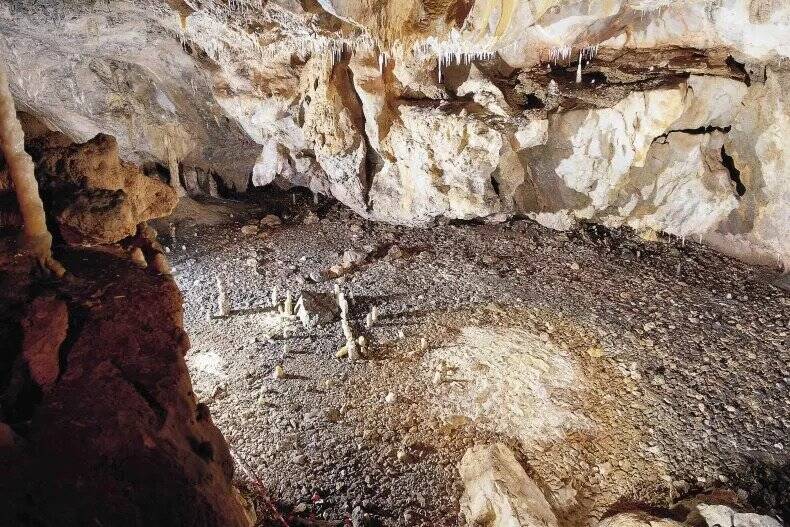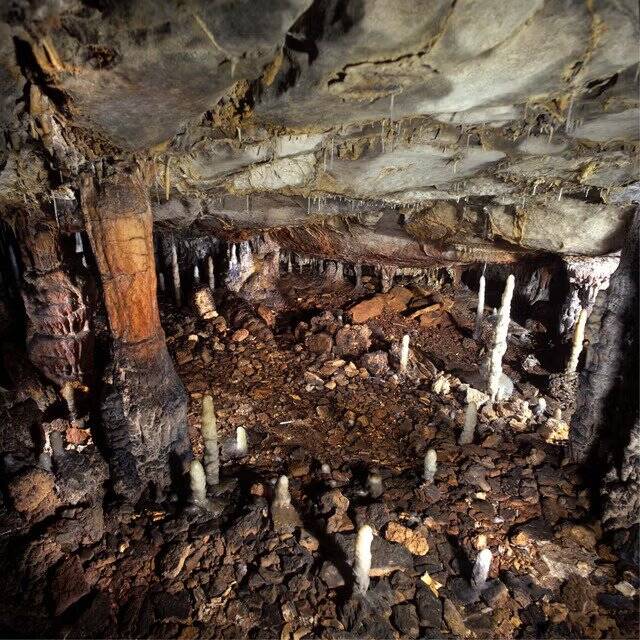The site's inhabitants belonged to the Magdalenian people that lived in caves across present-day France and Spain between 17,000 and 12,000 years ago.

PROYECTO LA GARMA/GOBIERNO DE CANTABRIAThis cave dwelling offers an extraordinary look at human life during the Stone Age.
Some 16,000 years ago, a landslide rumbled down a slope and blocked off the entrance of Spain’s La Garma cave complex, an intricate network of passageways that snakes across several underground levels. Now, archaeologists exploring the complex have come across an area of the cave that was used as a dwelling by prehistoric humans 16,800 years ago.
This section of the cave, uncovered by archaeologists Pablo Arias and Roberto Ontañón from the University of Cantabria and frozen like a “time capsule,” is being called “one of the best preserved Paleolithic dwellings in the world,” according to the Government of Cantabria. The dwelling, which is an oval space of about 54 square feet, includes a number of remarkable objects that have shed fascinating light on prehistoric life.
As Newsweek reports, the cave dwelling appeared to be centered around a small bonfire, where prehistoric hunter-gathers apparently congregated as they went about their daily activities. These would have included making tools out of stone, bones, and antlers, and working to make things out of fur.
The archaeologists were able to find the dwelling and its objects through two years of research. To preserve the space, they relied on noninvasive techniques like 3-D mapping, soil analysis, and radiocarbon dating.

Government of CantabriaThe oval-shaped dwelling is about 54 square feet in size and is delimited by stone blocks and stalagmites.
However, this dwelling is just one small part of the La Garma Cave complex. The complex is a “unique” archaeological site where researchers have discovered rock art, Paleolithic remains, and thousands of fossils. So far, five levels of the cave complex have been discovered that appear to show evidence of human activity spanning across 300,000 years.
Over the years, more than 4,000 objects have been found in the cave as a whole, Heritage Daily reports. These include bones from deer, horses, and bison, 600 pieces of flint, needles, a porto-harpoon, shells from marine mollusks, pendants once worn by the cave dwellers themselves, and a number of decorated bones.
These decorated bones are perhaps the most impressive objects discovered in the complex. They include the phalanx of an aurochs (an extinct cattle species) engraved with a depiction of the animal and a human face.

Mario Modesto/Wikimedia CommonsThe exterior of the La Garma Cave complex. The entrance is covered by a white sheet near the center-right of the frame.
The most recently discovered dwelling was apparently used by prehistoric humans during the Paleolithic era, also known as the Old Stone Age. During this period, which stretched from roughly 2.5 million years ago until 10,000 B.C.E, prehistoric humans lived in caves or simple huts and operated within hunter-gatherer societies. Using stone and bone tools, like those found in the 16,8000-year-old La Garma cave dwelling, they hunted animals like bison and deer and used fire to cook and eat their remains.
These prehistoric people were also the first to leave behind art like cave paintings and stone sculptures, similar to the engraved aurochs phalanx.
The Old Stage Age eventually gave way to the Mesolithic (or Middle Stone Age) after the end of the last Ice Age, which forced humans to migrate and caused the extinction of many of the animals they had traditionally hunted.
As such, the 16,800-year-old cave dwelling found in the La Garma Cave complex offers a revealing look at what life would have been like for Paleolithic people. The cold fire, flint tools, and bone art certainly paint a picture of how prehistoric humans once used this network of caves.
After reading about the Spanish cave dwelling used by prehistoric humans 16,800 years ago, see how the largest known cave art in North America was unearthed in Alabama. Or, see how archaeologists investigating Marmoles Cave in Spain came across a cup made from a human skull.





